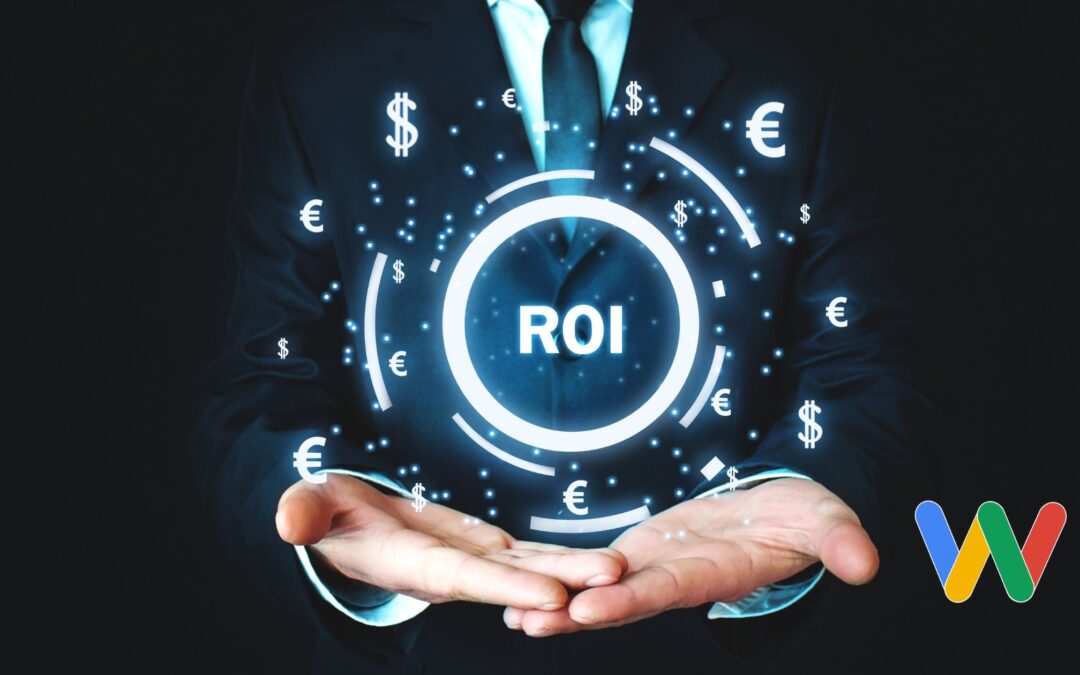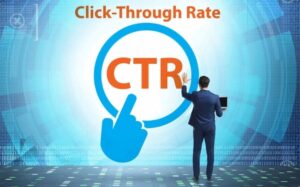Imagine working on a digital marketing campaign only to find out later that it generated no business.
In digital marketing, throwing spaghetti at the wall and hoping it sticks just doesn’t work.👎
You need to make sure you’re moving in the right direction through effective tracking. 📊
That’s where return on investment or ROI comes in. So, what is ROI in digital marketing and how can it help your business stand out online? The acronym is short for Return on Investment and it’s the term us digital marketers use to describe the measurement of revenue generated from our efforts.
Measuring ROI enables you to identify winning strategies and discard others, and that’s key to understanding your campaign’s acquisition cost.
Table of Contents
In this blog post, we’ll tell you everything you need to know about ROI in digital marketing, including:
- What it is
- Why is it crucial
- How to measure it
- How to optimize it
Let’s dive in.
What is ROI in Digital Marketing?

In digital marketing, ROI stands for return on investment, which means the return you get for every dollar spent on marketing efforts.
Your ROI can be positive or negative.
- Positive ROI simply means you’re making a profit
- Negative ROI means you’re investing more than you make
Of course, you want your ROI to be on the positive side and as high as possible!
Why Measuring ROI is Crucial In Digital Marketing?
ROI measurement allows you to identify and focus on high-performing digital marketing strategies.
Let’s talk about the benefits of ROI tracking in more detail.
First, See What’s Working…
Whatever your digital marketing goal is, ROI tracking tells you if you’re allocating your resources in the right places.
It tells you whether a campaign is helping you generate your desired ROI.
Allocate Resources Wisely!
With ROI measurement, you can identify and focus on winning campaigns.
This helps you gain maximum return with available resources.
How to Calculate ROI in Digital Marketing?
Let’s talk about the formulas you can use to calculate your return on investment in digital marketing.
A Basic ROI Formula:
The simplest ROI formula is something like this:
Total revenue generated – Digital Marketing Cost
It calculates the total profit you generate from a particular digital marketing campaign.
Example calculation: Let’s say you’ve spent $500 on a digital marketing campaign and your total revenue from that campaign is $700.
Applying the above formula, your ROI (or profit) would be $200 ($700 – $500).
Your ROI as a Percentage:
Now, let’s say you want to calculate your ROI as a percentage.
Here’s the formula for that:
(Net Profit / Total Cost) * 100
Example calculation: Considering the same example, let’s say your profit is $200 and the total cost is $500.
Your ROI as a percentage would be:
(200/500)*100 = 40%
This means the digital marketing campaign has generated a 40% ROI.
You May Also Like: How to Hire an SEO Agency (Questions to Ask)
Impressions
Revenue and sales are concrete digital marketing metrics. But, these aren’t the only important metrics.
For instance, in a brand awareness campaign, you need to track your page views and impressions to gauge its effectiveness.
You can track the “Cost per Impression” metric to ensure you’re not spending too much on building brand awareness.
Click-through Rate
CTR tells you the percentage of people clicking on your marketing materials after viewing them. For instance, in an email marketing campaign, your click-through rate reflects the percentage of people clicking on a link in your emails.
Similarly, it tells you how many of your search engine impressions are converting into website visitors.
A low CTR usually means your content or copy isn’t persuasive enough.
Return on Ad Spend (ROAS)
As the name suggests, ROAS is the return you get from an ad campaign.
Calculating it is relatively straightforward as you know exactly how much you’re spending.
Here’s a simple formula to calculate ROAS:
PPC Revenue – PPC Spend = Return in Profit
Example calculation: $700 – $500 = $200
ROAS in Percentage
((PPC revenue – PPC spend) / PPC spend) * 100
Example calculation:
ROAS = (($700 – $500) / $500) * 100
ROAS = ($200 / $500) * 100
ROAS = 0.4 * 100
ROAS = 40%
Related post: How to Calculate SEO ROI?
Understanding Your Conversion Rate
Your conversion rate is the percentage of leads that convert into customers.
A conversion can be anything from a click or a sale, depending on your goals.
Measuring it can help you identify high-performing strategies.
For instance, a campaign may generate higher conversions on mobile devices than on desktops.
You can allocate more resources to campaigns that actually move the needle for your business.
Now that you know how to measure ROI in digital marketing, let’s talk about how to maximize it.

How to Improve Your ROI in Digital Marketing?
Once you know your ROI, you’re in a perfect position to get to work and improve it.
Here’s how you do it.
Set Your Goals and KPIs
Start by setting S.M.A.R.T (Specific, Measurable, Achievable, Relevant, and Time-Bound) goals and KPIs.
As you move forward, track your KPIs to make sure you’re moving in the right direction.
Focus On Best-Performing Channels
Focusing on fewer marketing channels can give you a higher ROI.
As your campaign progresses, use tracking to identify your best-performing channels.
This includes email, search ads, blogging, social media marketing, etc.
Don’t hesitate to reallocate your marketing budget whenever needed.
Use Multi Touch Attribution
Attribution in marketing refers to identifying which touchpoints are responsible for positive results.
A prospect or customer usually interacts at multiple levels with your brand before converting or bouncing back.
Multi Touch attribution tells you which touchpoints are causing people to bounce, allowing you to fix your campaigns on a deeper level.
Concluding Thoughts on Marketing ROI from Webology
The simplest and most effective way to know if a campaign is generating the desired results is by measuring its ROI.
Simply put, ROI is the total outcome you generate from your investment in marketing.
For instance, to calculate your profits from a campaign, you can subtract its cost from the total revenue.
While sales or revenue is the ultimate goal, you may also want to track your:
- Total impressions
- Click-through rate
- Conversions
- Return on ad spend (ROAS)
Moreover, multi touch attribution gives you a zoomed-in overview of how your campaigns are working at every touchpoint.
Lastly, the goal of ROI measurement is to maximize it moving forward. To do that, you should:
- Set your goals and KPIs from the start
- Focus on best-performing campaigns
- Use multitouch attribution
Let Webology optimize your campaigns for increased conversions. Schedule a free strategy call and see how.
Founded in 2016, Webology is headquartered in Birmingham Alabama and has been helping businesses and organizations of all sizes achieve their digital marketing goals.
With a team of experts in SEO, PPC, social media, and content marketing, we have the tools and knowledge to drive results for your business. Our goal is to create customized campaigns that not only increase revenue but also build brand awareness and long-term success. Let us take the lead in your online marketing efforts so you can focus on running your business. Contact us today to see how we can help you reach your goals!















